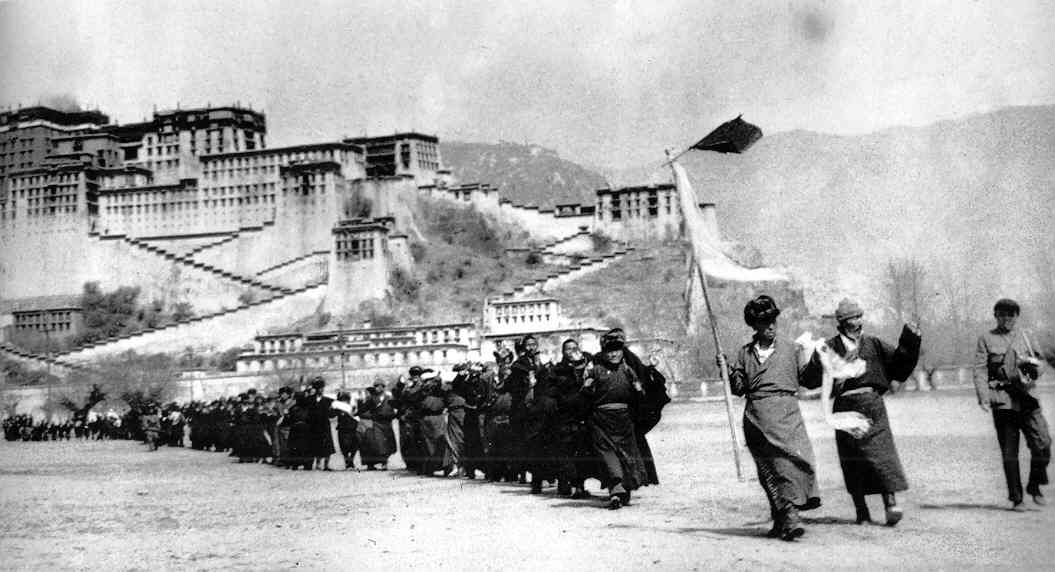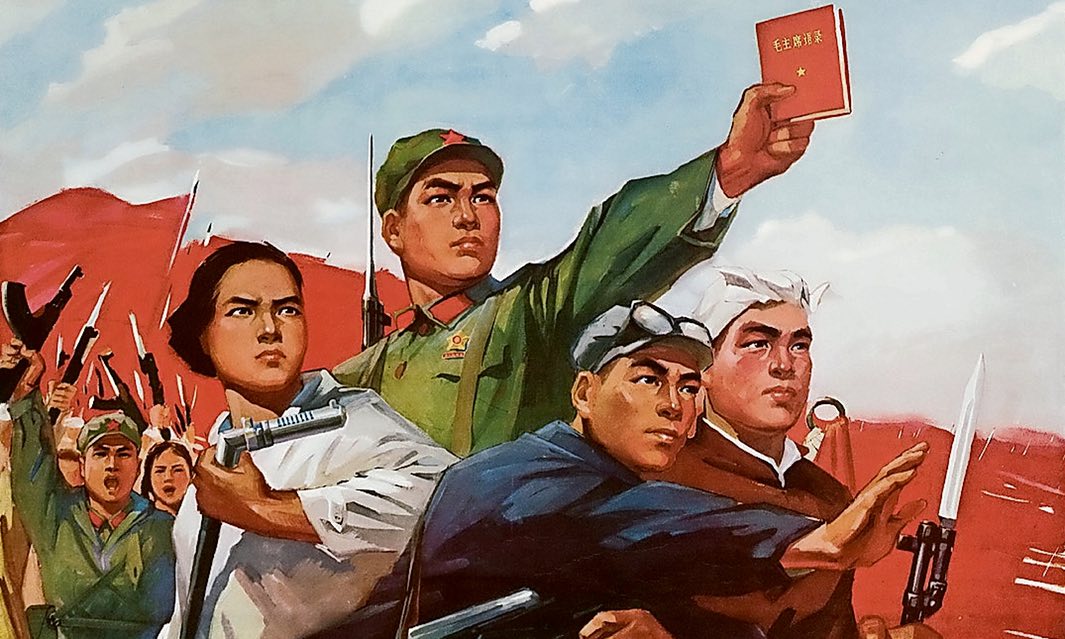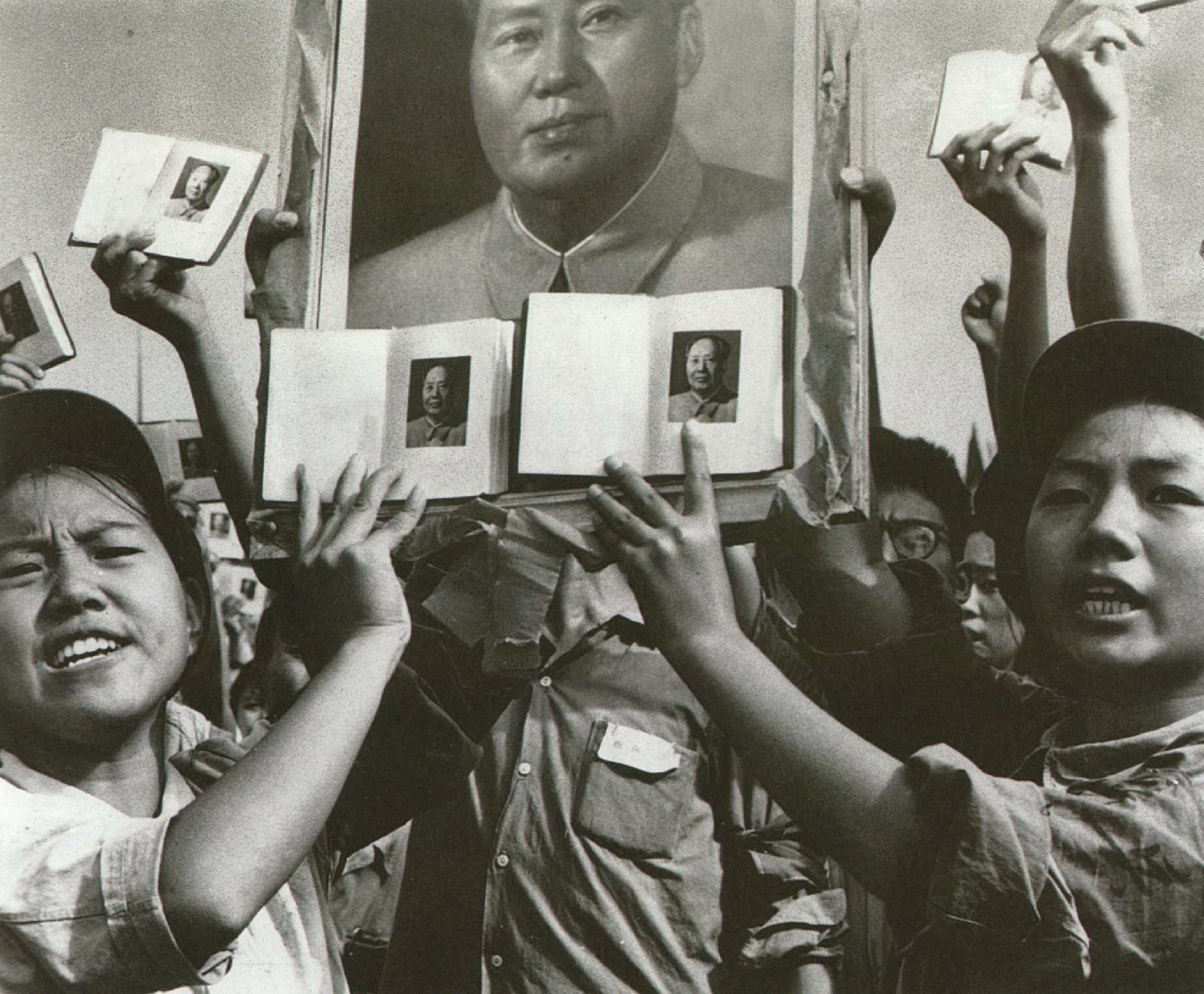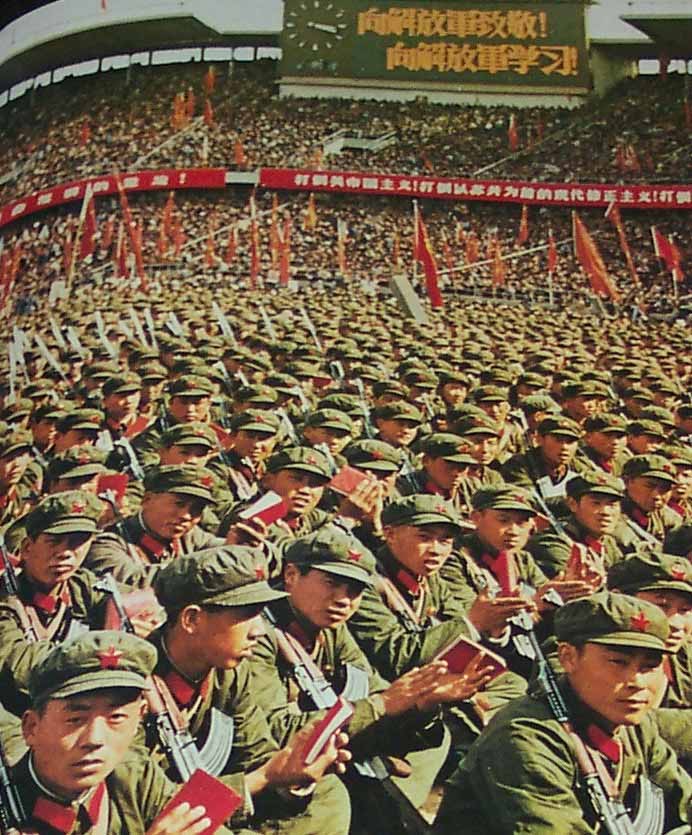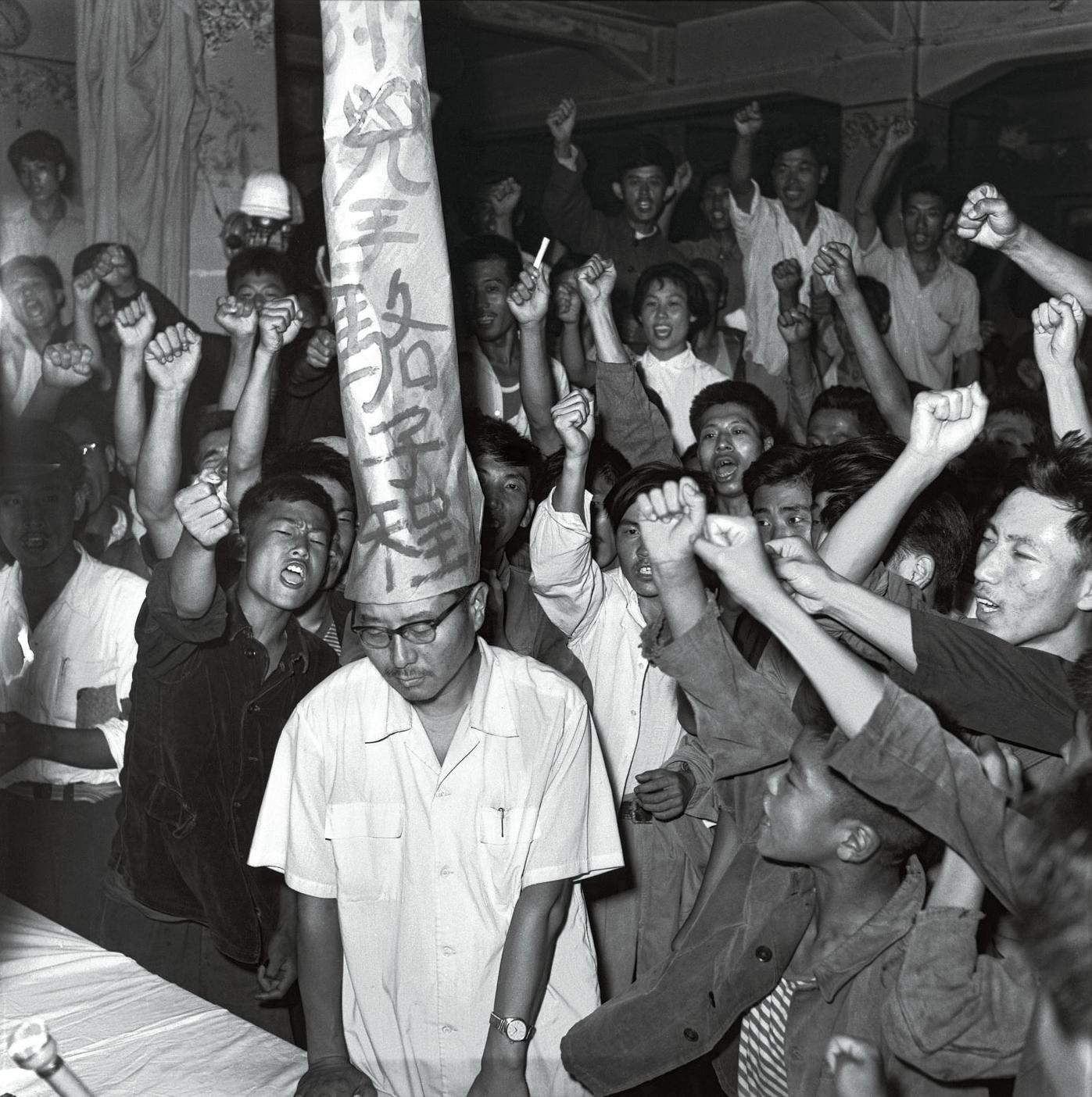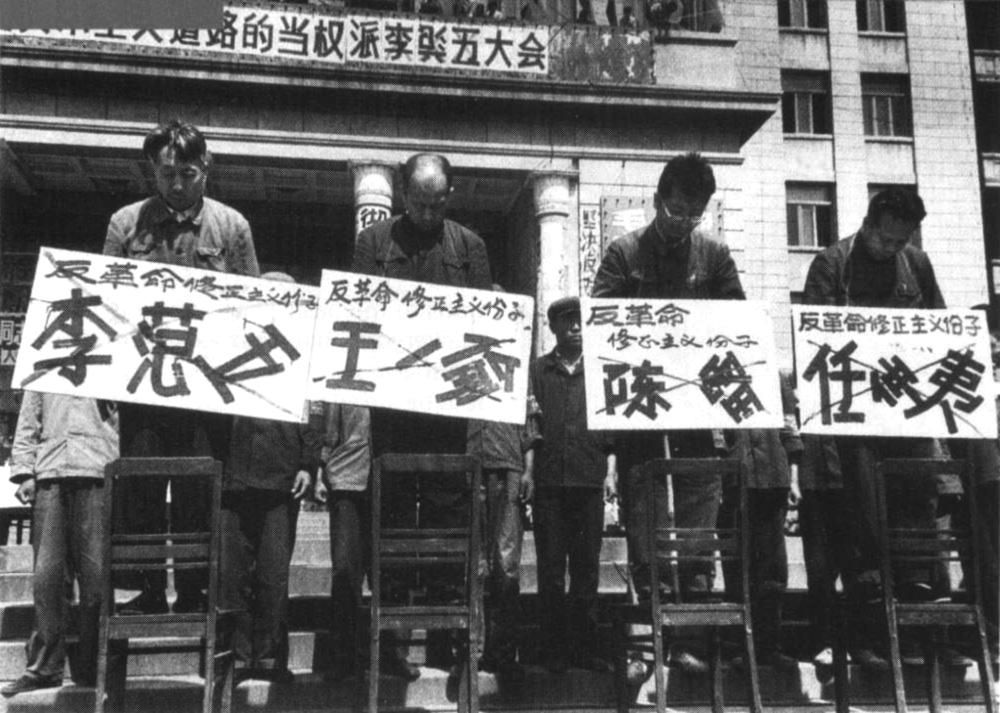19. THE SETTLING IN OF THE COLD WAR


MAO'S CHINA
 Mao's disastrous "Great Leap Forward"
Mao's disastrous "Great Leap Forward"
 Mao easily builds his "Cultural
Mao easily builds his "Cultural
Revolution" among China's youth
 Mao and his young "Red Guards" bring
Mao and his young "Red Guards" bring
down the older generations
 Mao purges the ranks of China's
Mao purges the ranks of China's
Communist leadership
 The whole affairs turns into another
The whole affairs turns into another
massive Chinese disaster
The textual material on page below is drawn directly from my work
A Moral History of Western Society © 2024, Volume Two, pages 304-306.
MAO'S DISASTROUS "GREAT LEAP FORWARD" |
| Having
secured Communist rule for China in 1949 by leading basically a huge
peasant army to victory, it seemed by the mid-1950s to the more
"conventional" Marxists of China that it was time now to turn the
dynamic over to the industrial-urban (not rural peasant) world … where
Marxist history was supposed to unfold. Thus Mao found himself
being put aside. He was still considered to be a heroic figure –
but not someone destined to take the Chinese revolution forward along
truly Marxist lines. Needless to say, this was not a political
trend that Mao was going to let happen. Somehow he was able to convince the Party leaders that he could push rapid Chinese industrialization ahead as effectively as he had won China for the Party with his peasant army. What he proposed to do as a new 5-year plan was to collectivize all the independent farms (even those recently turned over to his peasant followers) in order to make them part of the State's communal property … and then conduct an industrial revolution there … as well as in urban China. In fact with the huge rural workforce now employed as state laborers, the industrial revolution would move ahead even more quickly than if it were conducted solely as an urban operation. And the test or measure of the ingenious character of this new plan was that China's iron production – which Mao convinced his colleagues that all industry was ultimately based on – could take place across the nation's vast number of rural villages. True, the furnaces would be small. But they would be so numeric that the total production would put China way ahead as a major industrial producer. And so in 1958 his plan went into action as the "Great Leap Forward." But a leap forward it turned out not to be. First of all, the quality of the iron produced in these small rural furnaces was so inferior that it was totally useless for industrial purposes. But even worse, running those blast furnaces took a lot of peasant attention away from their fields … reducing enormously China's food production to near starvation levels. Consequently, the whole venture turned itself into a national disaster. Starvation and just sheer exhaustion cut through the Chinese population … killing millions of Chinese.1 Although the program was due to run until 1963, it was put aside in 1961 … as was also Mao once again. 1The estimated figures run from a low of 22 million to a higher figure of 42 million … although the numbers were so large and the statistics so poor that the exact number of Chinese deaths would never be known. 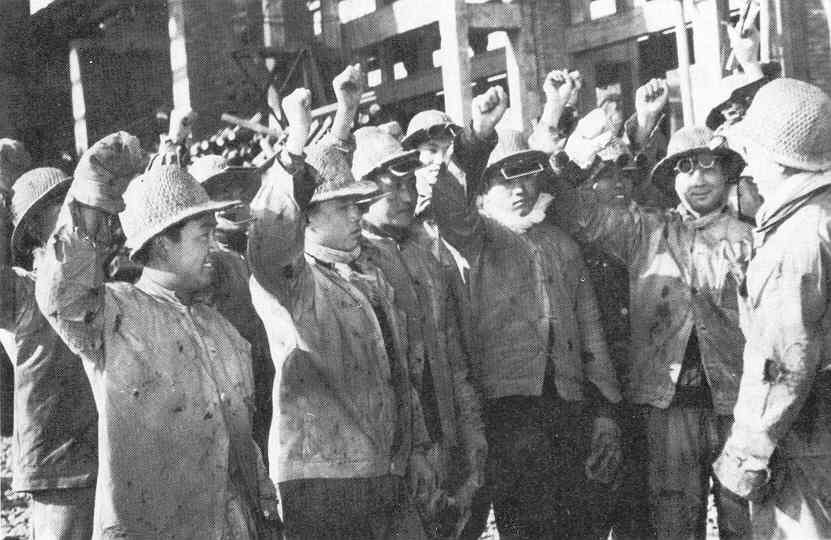 Chinese workers volunteering
to work unpaid overtime to surpass the British in steel production
late
1950s 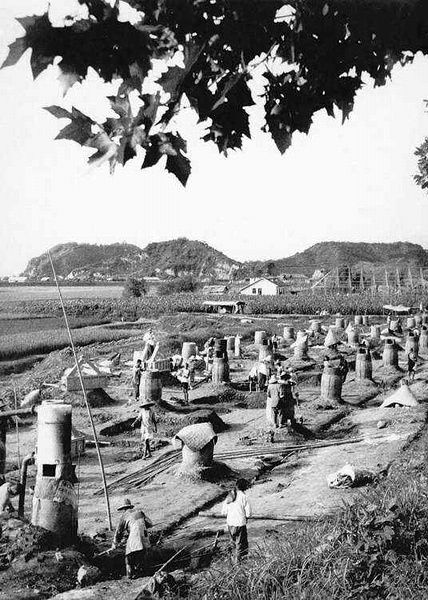
Backyard iron smelters created during the Great Leap Forward 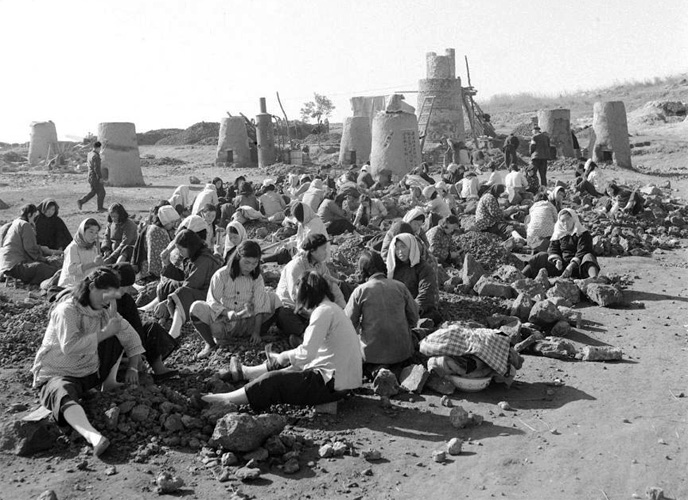

Chinadaily.com 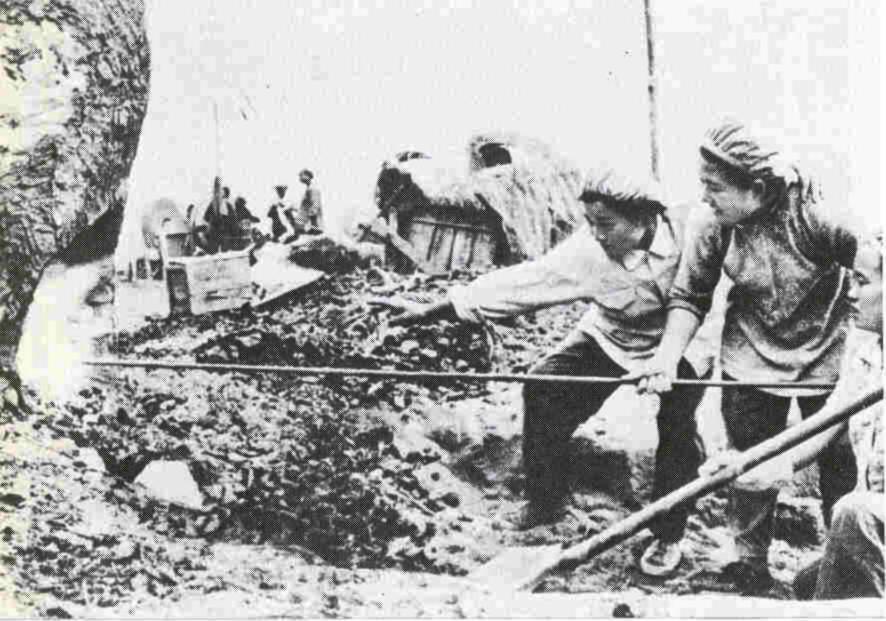
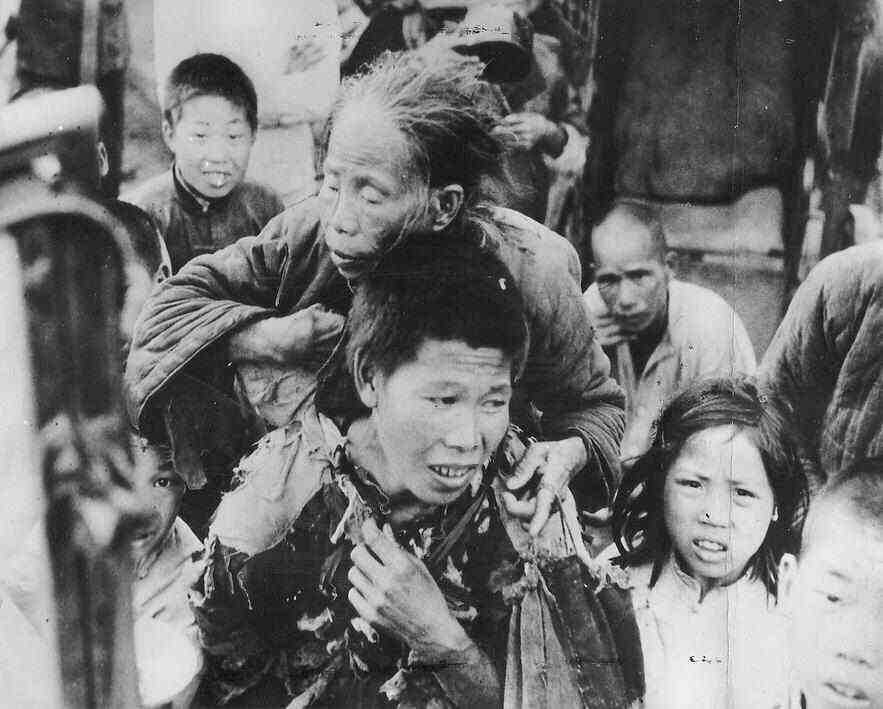
But by 1960 the problem of
hunger and mass starvation had become critical
The Chinese Cultural Revolution of the mid-late 1960s 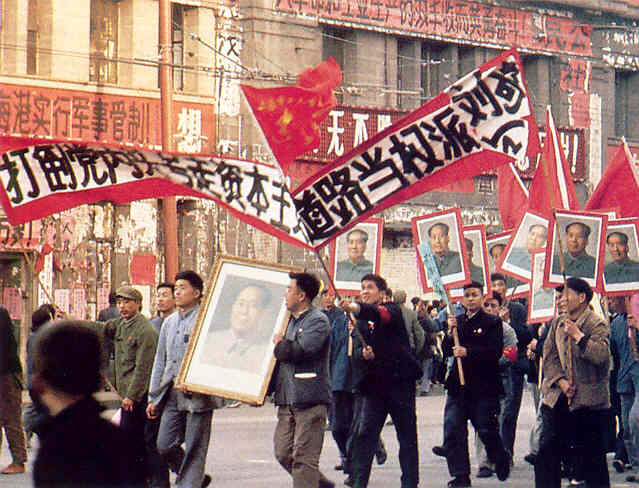
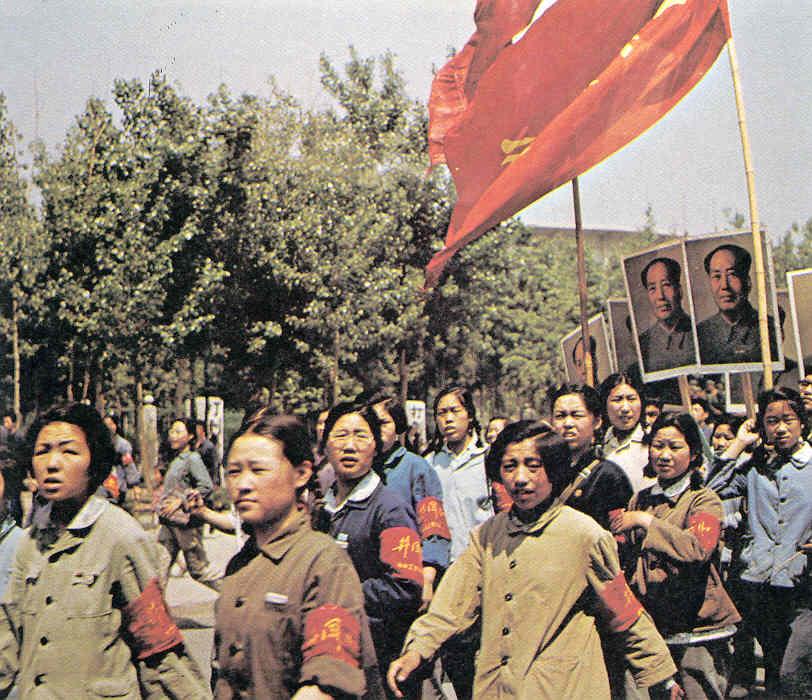
Youthful Chinese Red Guards
-- devoted followers of Chairman Mao Thousands of the Chinese Red Guard gather to study Mao's Red Book 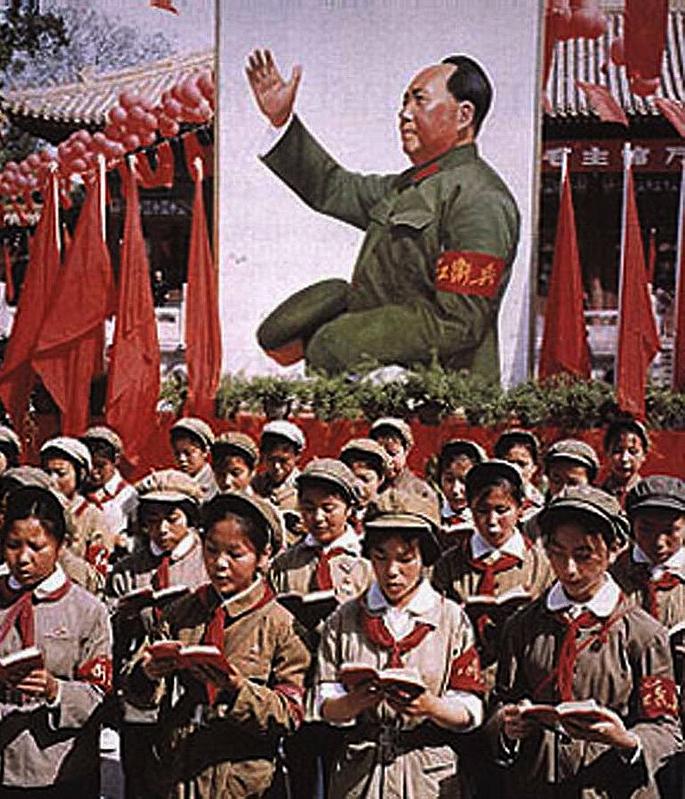
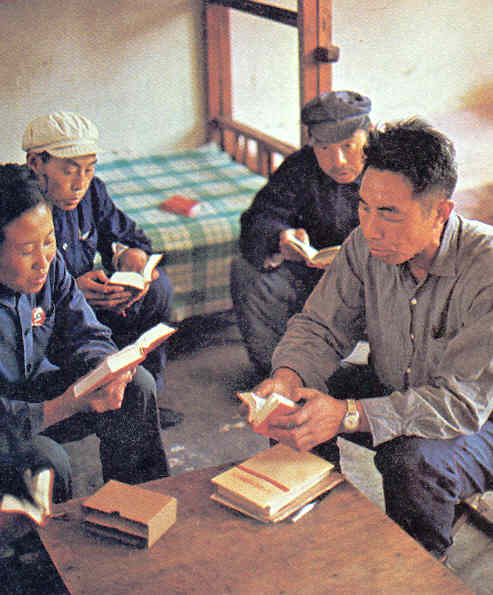
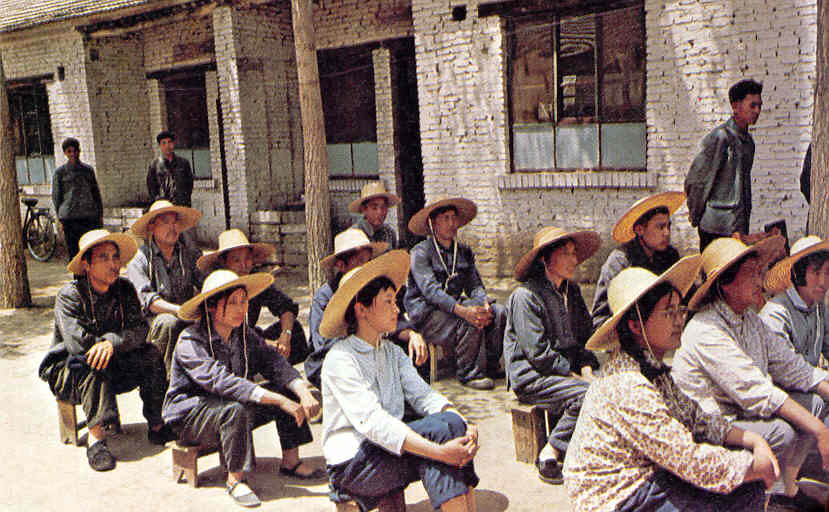
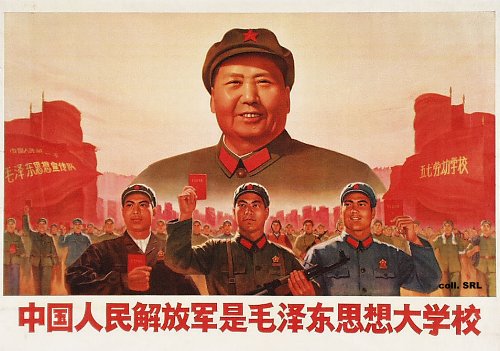
"The Chinese People's Liberation
Army is a University of Mao Zedong Thought" 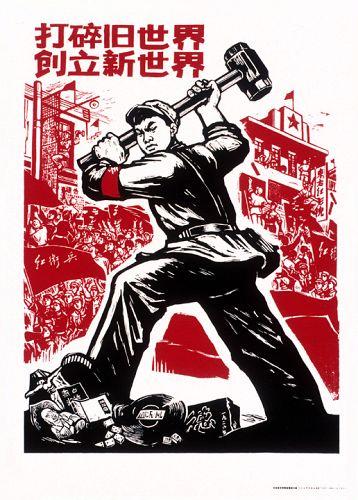
"We'll destroy old world
and build new" - A young worker crushes the
crucifix, Buddha and classical Chinese texts with his hammer - 1966 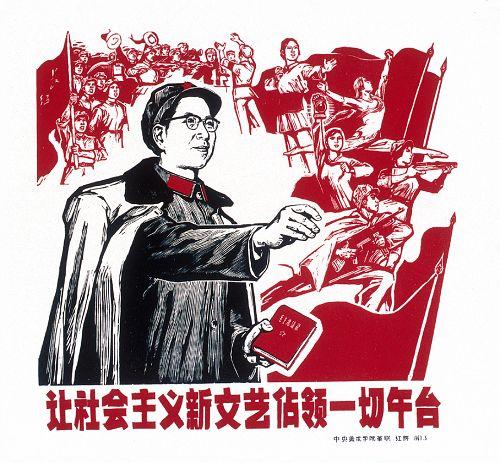
Mao's radically ideological wife: Jiang Qing ... "Let new socialistic culture conquer every stage" - 1967
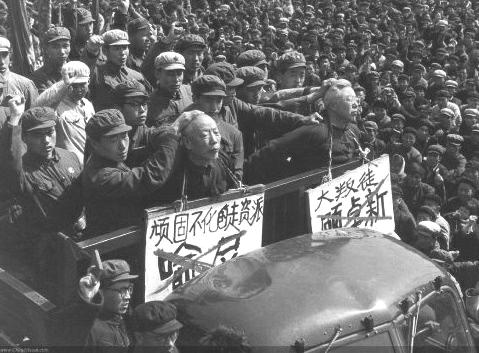
Two Chinese citizens branded as "Capitalist Roaders" and hence subjected to physical abuse in the public part of the Maoist strategy of "Struggle Sessions" to get Chinese who were less than revolutionary to struggle with their "errors" (hundreds of thousands were required to do this in "reeducation" (prison) camps) Chinese youth conducting a “Struggle Session,” forced on an adult (probably teacher or local official). In some of the worst cases they would even be beaten to death by the overwrought youth 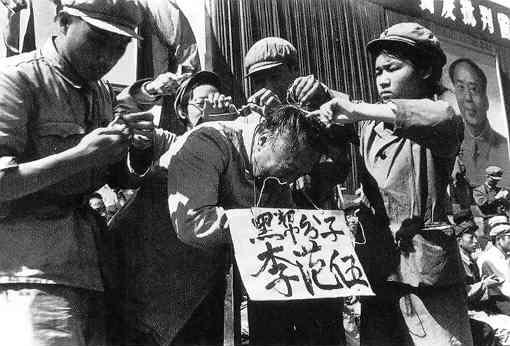
Young Maoists attacking an
older Chinaman who did not meet their measure
of proper Maoist demeanor
- 1967 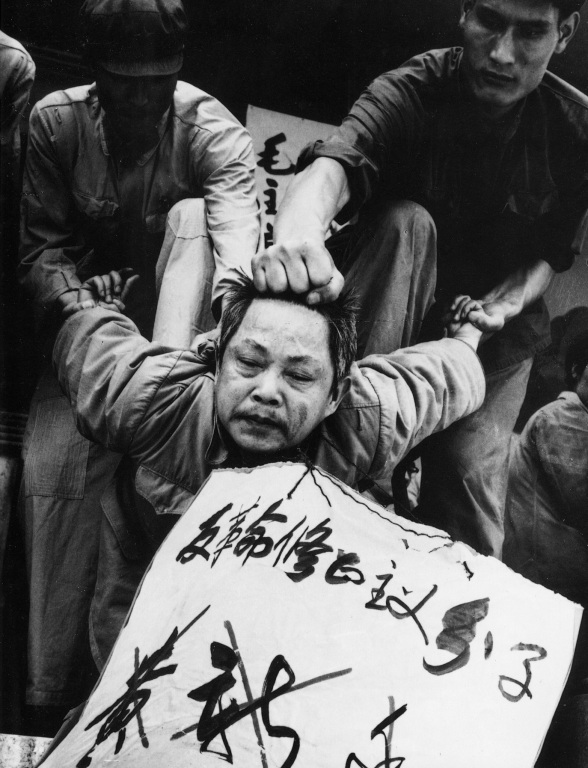
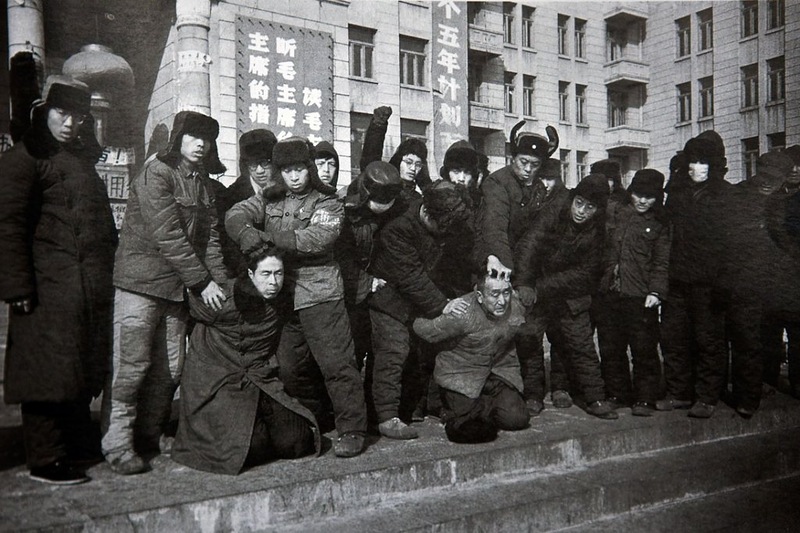
Chinese "Capitalist-Roaders" punished by Red Guards during the Cultural Revolution
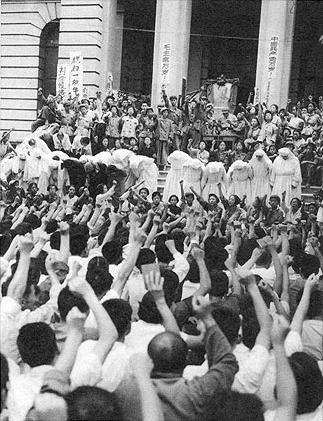
Red Guards denounce a group
of Franciscan nuns in front of their desecrated church in late August 1966
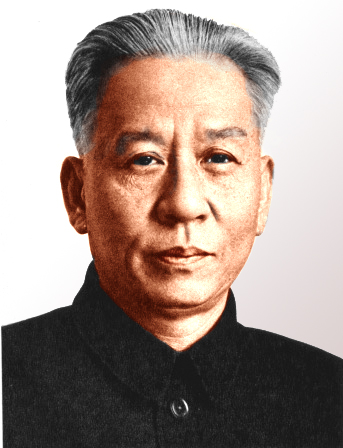
Liu Shaoqi - Chairman (President) of the People's Republic of China (1959-1968) 
Persecution of Liu Shaoqi's wife, Wang Guangmei - 1967
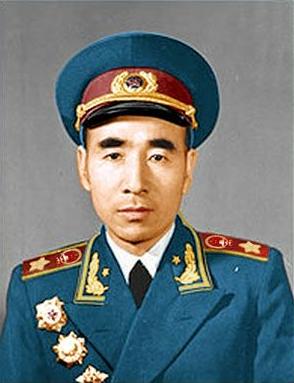 Chinese Marshal and Vice Chairman of the CCP - Lin Biao
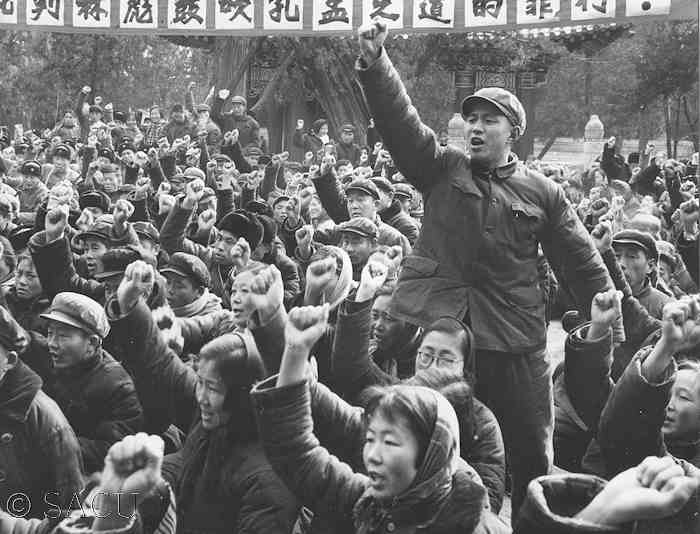 Lin Biao being officially denounced by the Chinese  Go on to the next section: Struggles in the Third World
 |
